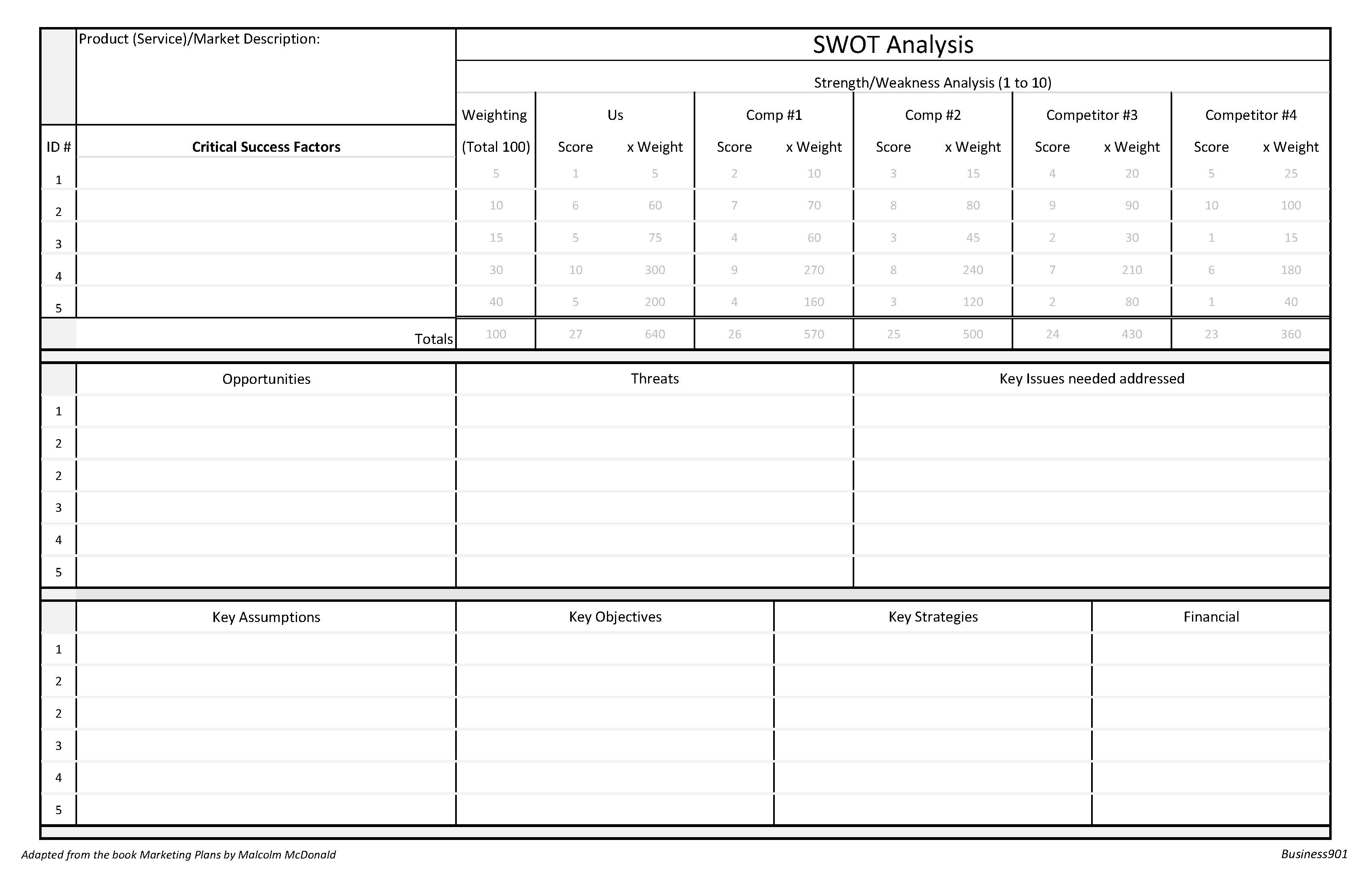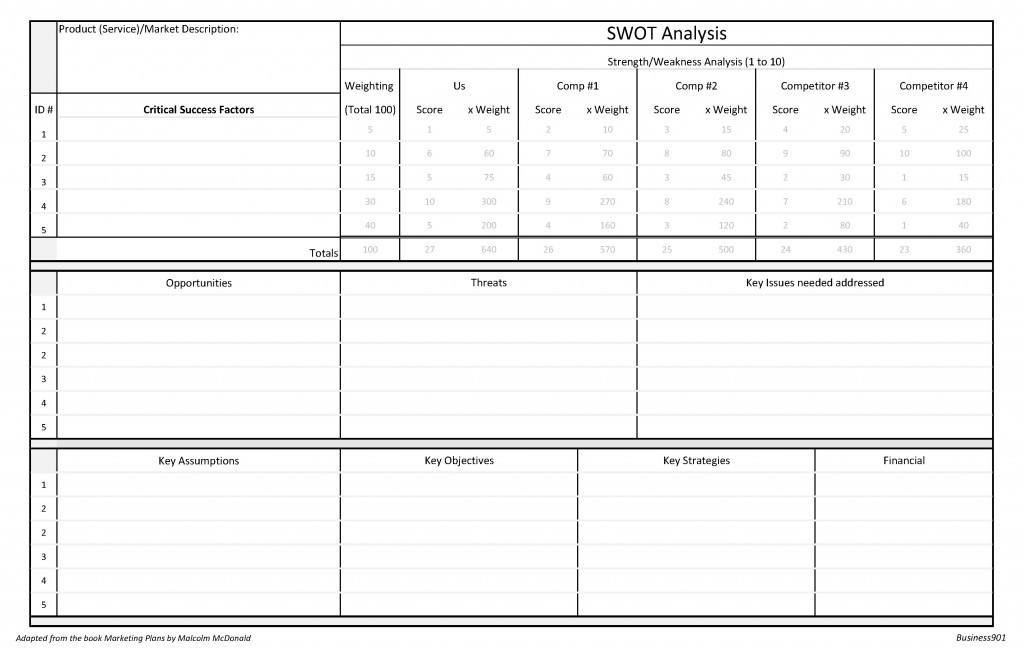In a past blog of mine, Growing your Company thru SOAR, I discussed the uses of SWOT (Strength-Weaknesses-Opportunities-Threats) outside the regular marketing realm and added some other areas as throughout the organization and also in Key Account Management. I also alluded to the regular practice of using SWOT simply as a 4-quadrant matrix that most of us have become accustomed. This prevalent method turns SWOT into nothing more than a brainstorming session and with little execution. An example:
The method I would propose is adapted from Marketing Plans for Service Businesses, Second Edition: A Complete Guide by Malcolm McDonald. That name may be recognizable from the Business901 podcast that can be found at The Process of Marketing Segmentation.
A SWOT should be carried out for several areas within our organization:
- For the organization as a whole (I also like to use SOAR)
- For each major Product(Service)/market segment
- For major competitors
- For Key Accounts
- For Key Accounts Markets
As you can see in the picture or the downloadable PDF, the actual SWOT part does not start till we have addressed and weighted the critical success factors for the Strengths/Weaknesses analysis. This first step is key in developing a proper analysis. If we do not address these factors, your SWOT will not be anything more than a brainstorming session and with a slim chance of moving the needle in the marketplace. The Excel Sheet automatically tabulates the factors as you put them in.
Completing this analysis of Strengths/Weaknesses, we are prepared to view the Opportunities/Threats that the outside world influences. Areas that have or will continue to impact our business. After the SWOT is done then and only should we decide on the Key Issues that need to be addressed. Completing this exercise, we proceed with noting the key assumptions we have made in formulating this analysis. Doing this before we list our key objectives and strategies. This is sort of a gut-check on our analysis before we decide on the key objectives (From what to what by when) and Key strategies (How will we do this?). The last block is assigning some type of financial measurement to meeting a particular objective. We may consider that even more powerful than a gut-check.
There are a few other items worth noting that Professor McDonald recommends and I considered putting on this sheet. One is to do a Risk Analysis for the Opportunities/Threats section. For some customers, I would definitely include this. However, I have a tendency to ignore this when it will be just a guess without any real analysis being done. The other item that I would include for background information and possibly attached to the SWOT is a summary of each element (S-W-O-T). It would look something like this:
The SWOT Element_________ which means___________ so the action needed is ________
An example of this using a Threat Element:
Increased competition which means a loss of market share so we will need to increase advertising.
Of course, we may have multiple ways to address competition and would create several statements around that element. We would of course do this for all the elements listed. This process makes us work through the analysis and ties it all together.
CAP-Do (More Info): What makes CAP-Do so attractive is that it assumes we do not have the answers. It allows us to create a systematic way to address the problems (pain) or opportunities (gain) from the use of our products and services.
Lean Marketing eBooks (More Info): Excerpt from the Lean Marketing House



